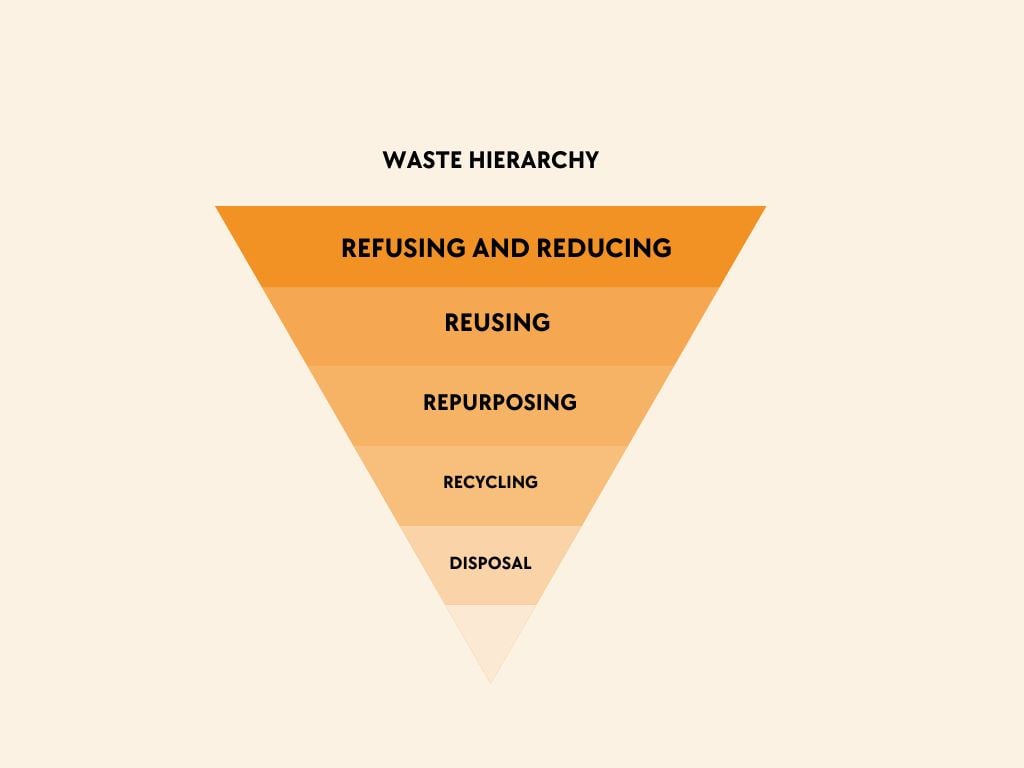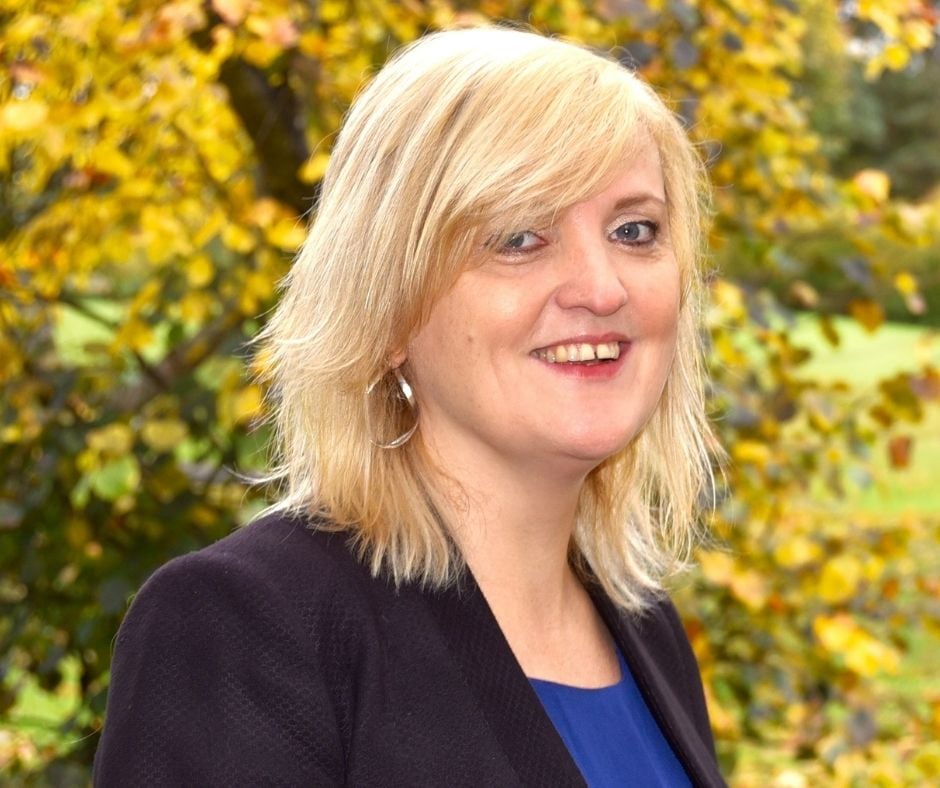Reuse is a great way to prevent waste. It’s high on the waste hierarchy and is a more sustainable option than repurposing, recycling, or disposal.
However, a report published by charity Keep Britain Tidy identified a ‘fundamental misunderstanding’ of the waste hierarchy.
The research shows this is preventing urgently needed waste reduction and reuse behaviours. It highlights most people will default to recycling rather than waste prevention as they feel this means they are ‘doing their bit’ for the environment.
The waste hierarchy lays out steps to reduce waste before getting to the recycling stage. As a framework of waste management principles, it’s helpful when working toward zero waste.
Designed as a pyramid (see image below), it lays out the best ways, which sit at the top, and the worst ways, at the bottom, to reduce and eliminate waste.

Here’s our rough guide to the waste hierarchy.
Refusing and reducing
Sometimes referred to as prevention, this is the best way to eliminate waste. It means rethinking the way products are used, designing more efficient systems, and considering what we need and if it’s beneficial.
Refusing means stopping waste at its source by refusing to new buying new; it becomes the last resort. Reducing means cutting back on purchasing resources that can’t fully be eliminated but can be mitigated in some ways. Embedding these principles into procurement processes is a good example on how to ensure waste is prevented at source.
Reusing
Reuse is defined as ‘to use something again’ in the Cambridge Dictionary and includes repairing or maintaining products.
We should reuse as much as possible. Doing so promotes a circular economy, helps avoid landfills, and lengthens the life of an item by passing commodities onto others to use.
The purpose behind Warp It is to help organisations reuse office furniture, stationery, and clinical, lab, and medical equipment, clothing, and electrical goods. Read our rough guide to reuse.
Many forward-thinking Warp It customers and friends have embraced repair and refurbishment of assets alongside reuse as part of their organisational circular economy strategies.
What’s more, the Green Alliance thinktank reported prioritising the repair and reuse of manufactured goods could create more than 450,000 jobs in the next 15 years, so this is a good thing to do!
Repurposing
When something can no longer be reused for its original purpose, finding a new way to use it, or even parts of it, is the next best thing.
Repurposing is sometimes referred to as upcycling but the two differ. Upcycling is, for example, painting a chair or table to refresh it and use it for its original intention.
Repurposing is changing the purpose of the resource, so it’s used in a different way. For example, using wooden pallets as furniture, or turning an old bathtub into a planter.
Recycling
Recycling is often perceived as the easiest environmentally friendly thing to do. While it’s better than disposing, it’s not the most sustainable way to reduce waste as involves breaking down materials to make it into something new. While it’s less energy intensive than producing virgin materials, recycling is an energy intensive process.
Disposing
This is the last resort.
Disposing either means sending stuff to waste incinerators or landfills that are already bursting. Worse still, this category may include fly-tipping, which is the illegal dumping of waste on land or in water. All these options are bad for our environment, wildlife, and human health.
While it may be impossible to avoid disposal completely, limiting it is the most sustainable option. If you’re working towards zero waste, keeping disposal below 10 percent is a realistic target.
Avoiding this option also means eliminating associated costs with waste disposal such as paying clearance firms and skip hire. A simple tweak to your waste disposal policy will ensure disposal is the last resort and, often, prevent useable items being sent to landfill. This will, in turn, also help with your sustainability strategy, sustainable purchasing plans, and circular economy activities.
Putting the waste hierarchy into practice is a brilliant way to realise a circular economy, minimise waste, and achieve net zero.
Make circularity a priority for your organisation and start reusing today. Take the online tour and get in touch to join the Warp It reuse community.
Why reuse? The benefits of reusing.
Read our reusing tips and tools.









